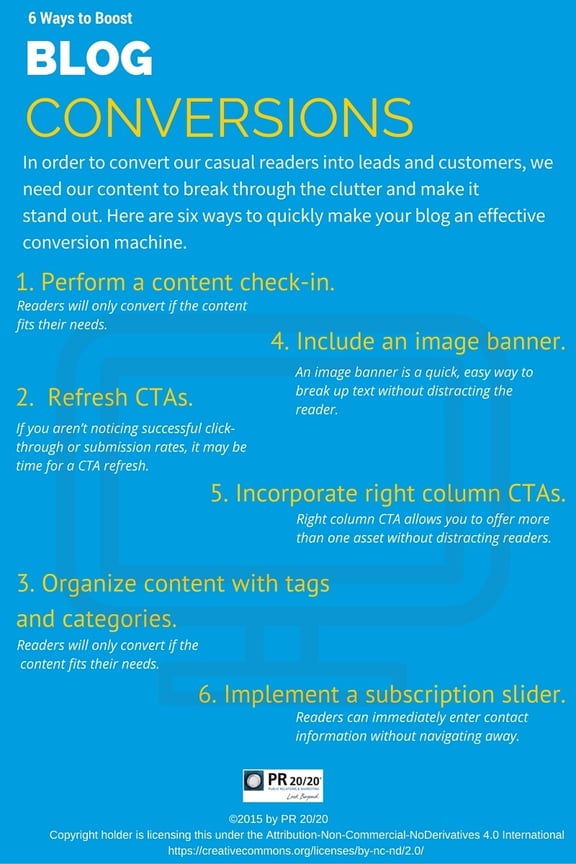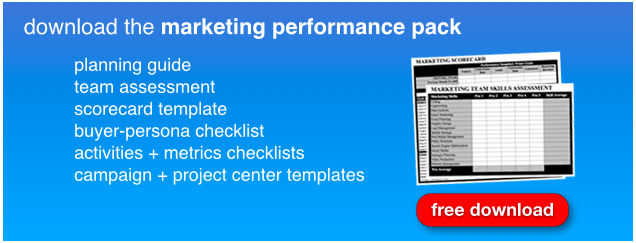 With 1.5 million blogs producing content on a daily basis, it’s no secret that blogging is an integral part of any inbound marketing plan. Blogging helps increase website traffic, establish authority and boosts search engine rankings.
With 1.5 million blogs producing content on a daily basis, it’s no secret that blogging is an integral part of any inbound marketing plan. Blogging helps increase website traffic, establish authority and boosts search engine rankings.
But, have you found numbers a bit stalled lately? Maybe your subscriber count is high, but readers aren’t engaged. The point of blogging is to convert visitors to leads and leads to customers, right?
The average person browses several posts daily, yet only 13% of blogs inspire a purchase. We can’t exactly blame our readers for not converting, as they’re probably suffering from information overload.
In order to convert our casual readers into leads and customers, we need our content to differentiate. Read below for six ways to transform your blog into a conversion machine.
1. Perform a content audit.
The most impactful articles address the pain points of specific personas. With this in mind, it makes sense that readers will only convert if the content fits their needs.
Performing a content check-in on all past and present content can help you get back on track. Consider these questions:
- Is it evergreen?
- Is the content for the right audience?
- Does it touch on industry trends, or is it just purely promotional?
- Does it satisfy every stage of the funnel?
- Does it address specific pain points?
Use content analysis tools like Buzzsumo to research industry trends and highly shared articles that will best appeal to your audience. From there, give your editorial calendar a revamp with fresh, relevant content to boost readership.
2. Refresh CTAs.
Calls to action can be a great way to gain leads and convert customers directly from your blog posts. But, if you aren’t noticing successful click-through or submission rates, it may be time for a CTA refresh.
Take a look at previously published posts and take inventory of the assets you’re promoting. Does every CTA drive traffic to the same ebook landing page? Or, maybe your CTAs don’t compliment your content.
Consider updating your CTAs with new assets that best align with your topics. Add colorful verbs and actionable language that will encourage your readers to click. Or, make text-based CTAs more visual. Simple steps like changing the shape or color can increase conversions by more than 35%.
3. Organize content with tags and categories.
As you ramp up your blogging efforts and industry trends change, you may find that your content ranges across several topics and personas. To keep your content organized and help readers to easily navigate topics, organize with tags and categories.
This organization will help your audience find the right information they need. Plus, it could help introduce them to new, unfamiliar topics, establishing your blog as a go-to industry resource.
Organizing with tags and categories boosts SEO, increases time spent on page and provides an overall better reading experience. To increase conversions, it’s recommended that blogs have approximately three to eight categories.
4. Include an image banner.
Sixty-five percent of us are visual learners. Where’s a better place to start than our blog’s banner?
Including an image banner on your blog is a quick, easy way to break up text without distracting the reader. Images grab the reader’s attention, help illustrate products, display a company design and allow marketers to use product or service screenshots. Plus, if you include a tagline or blog description right on the banner, readers can quickly understand the content and decide if they want to continue reading, attracting more qualified leads to convert.
Use platforms like Canva or PicMonkey to make quick image banners that you can easily resize for your blog.
5. Incorporate right column CTAs.
As mentioned before, CTAs are meant to encourage readers to click for additional assets and content offers. To convert visitors into leads, include eye-catching CTAs that effectively translate the value of clicking.
But, CTAs can live on your blog other places than just the bottom of a post. Sidebar or right column CTAs are effective in converting blog readers into leads. Including a sidebar or right column CTA allows you to offer more than one asset without distracting readers with offers everywhere they look.
It’s recommended to keep sidebar CTAs above the fold, right where the blog article appears.
6. Implement a subscription slider.
HubSpot states that slide-in CTAs on your blog are a great way to offer additional information without appearing intrusive. They allow readers to continue to read without fighting annoying pop-ups. In fact, slide-in CTAs can increase click-through rates by 192% and submissions by 27%.
Subscription sliders ensure your CTAs aren’t lost in the mix of text on your blog. Readers can immediately enter contact information without navigating away from the post, boosting your lead conversions.
Plus, if you’re using HubSpot’s COS for your blogging efforts, you can implement smart CTAs. That means CTAs will be customized based on where your reader is in the database or buying process. Readers only see CTA content that is relevant to them, rather than being blasted with a prompt for an action they’ve already taken.
How have you increased conversions on your blog? Share your advice in the comments below!

Download a PDF of the image above.
Rethink Your Strategy
Still building a foundation for your content marketing plan? Download the marketing performance pack to help your organization build core strengths and connect actions to outcomes.
Photo credit: Pixabay

%20Logo_BlueOrange_Trademark.png?width=800&height=269&name=Ready%20North%20(RN)%20Logo_BlueOrange_Trademark.png)




.jpg?width=300&name=Services%20Hub%203%20(3).jpg)



COMMENTS